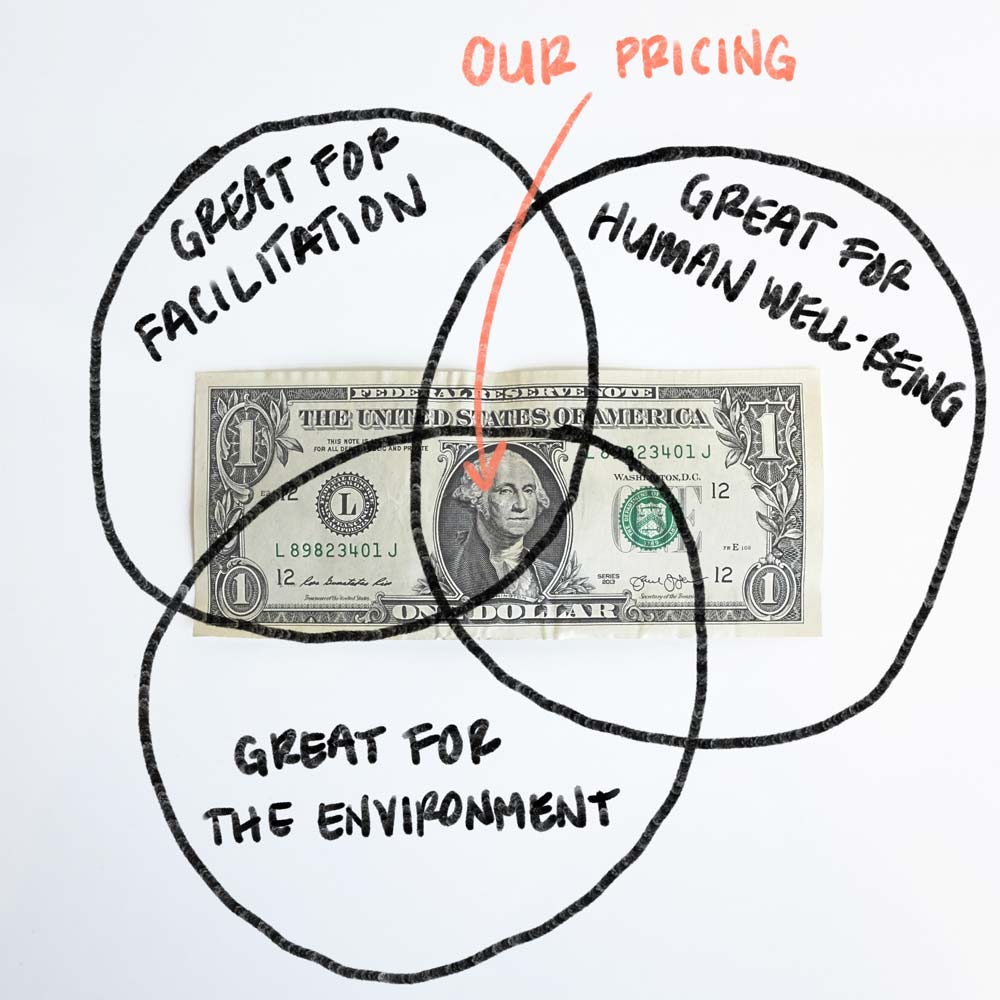In a comment on our Kickstarter, Doug wrote, “Looks like a good product, but the price seems high. This would be much better at $29.”
We appreciated seeing this publicly, and for Doug to comment it (and back the project!), because it perfectly synopsized the trickiness of a private process we’ve been in the midst of for over a year now, and something that I’ve spent a lot of time trying to figure out.
Making physical things is hard. Pricing them “correctly” feels impossible.
What we replied to the comment is most of what I have to say in general. And because it sums up a lot of our thoughts, I’m going to share that now, in case anyone is similarly wondering (with some additional parentheticals).
To anyone who thinks these seem great, but the price seems high, we hear you: the price seemed high to us, too.
And we’d love to be able to do everything we’re committing to — in regards to the quality of the cards, caring for the environment, humane manufacturing, and level of service — and sell the deck for $29. We just can’t.
To give you some context, we didn’t land on a price by saying, “How much should these cost?” or “What’s an amount people will pay?”
Instead, the questions we asked, over the course of two years, started with, “What would it take to make a deck that’s reusable and useful in every facilitation, and lasts as long as we remain in the field?”
(That led us down roads of different materials, and first dry-erase then wet-erase compatibility)
Then we asked, “Can we make that deck of cards in a way that doesn’t trash the planet? That’s not just carbon neutral, but leaves the environment better off?”
(That led us to try to find materials that are post-consumer recycled, and researching shipping routes and carbon offsetting and tree planting and other ways to repair the harm we’re part of.)
And, “Is it possible to manufacture them in a setting that is safe, where the workers are paid well, have reasonable hours and holidays and a quality of life we would be proud to support?”
(We started learning about certifications and auditing, and workplace standards and the companies that are rising high above them, as well as figuring out all the ins and outs of the supply chain to make this thing.)
Once we had those answers, we asked, “How can we make sure the entire process, from ordering to them arriving at your door, is easy, fast, and any hiccups get attended to immediately?”
(This quickly made us realize we’d need help. It couldn’t just be us, packing and shipping cards, while being full-time professional facilitators and educators. So we started vetting companies who could help, with all the questions above in our mind.)
Finally, “What additional resources will facilitators need to ensure these make it into their bag for every training? How can we fundamentally support the ways people facilitate?”
(This is our sweet spot. It’s where we thrive. We know that some people don’t even need an instruction manual, and for others, an instruction manual barely scratches the surface. Above all, we know people need and want community.)
These questions reflect the checking all the boxes post we wrote about a year ago here on the blog, “The Questions We Asked Every Potential Manufacturer." It was a long process and required talking to dozens of companies that would (or would not) be part of our supply chain.
And eventually, we got to a place where we could say, “Yes!”
It would just take extra measures, extra intention on our part, and extra cost.
After we had all those answers, we added up what it would cost to deliver on those promises, and that’s where the price came from. It wasn’t something we set upfront. It was something we discovered.
Ultimately, we’d love for these to be less expensive. Honestly, we’d prefer to give them away for free.
That’s why we have the DIY deck (get the preview pack for free right now to test that out), and won’t be restricting anyone’s usage of the materials we create. We’re gifting all of that to the commons — unconditionally — for anyone to use for whom the cost of the deck is a barrier.
And for the people who really want the waterproof, ethically-made, buy-it-for-life deck, it’s available (or, hopefully, it will be!). And this is the price.
